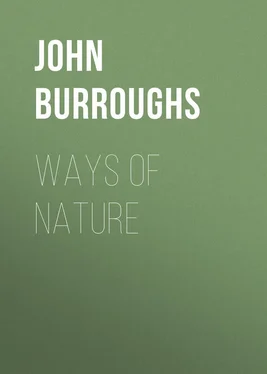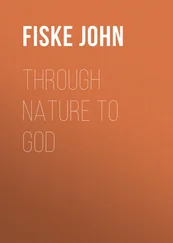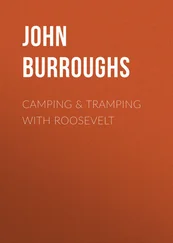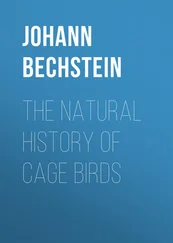John Burroughs - Ways of Nature
Здесь есть возможность читать онлайн «John Burroughs - Ways of Nature» — ознакомительный отрывок электронной книги совершенно бесплатно, а после прочтения отрывка купить полную версию. В некоторых случаях можно слушать аудио, скачать через торрент в формате fb2 и присутствует краткое содержание. Жанр: foreign_antique, foreign_prose, на английском языке. Описание произведения, (предисловие) а так же отзывы посетителей доступны на портале библиотеки ЛибКат.
- Название:Ways of Nature
- Автор:
- Жанр:
- Год:неизвестен
- ISBN:нет данных
- Рейтинг книги:3 / 5. Голосов: 1
-
Избранное:Добавить в избранное
- Отзывы:
-
Ваша оценка:
- 60
- 1
- 2
- 3
- 4
- 5
Ways of Nature: краткое содержание, описание и аннотация
Предлагаем к чтению аннотацию, описание, краткое содержание или предисловие (зависит от того, что написал сам автор книги «Ways of Nature»). Если вы не нашли необходимую информацию о книге — напишите в комментариях, мы постараемся отыскать её.
Ways of Nature — читать онлайн ознакомительный отрывок
Ниже представлен текст книги, разбитый по страницам. Система сохранения места последней прочитанной страницы, позволяет с удобством читать онлайн бесплатно книгу «Ways of Nature», без необходимости каждый раз заново искать на чём Вы остановились. Поставьте закладку, и сможете в любой момент перейти на страницу, на которой закончили чтение.
Интервал:
Закладка:
Works on animal intelligence, such as Romanes's, abound in incidents that show in the animals reason and forethought in their simpler forms; but in many cases the incidents related in these works are not well authenticated, nor told by trained observers. The observations of the great majority of people have no scientific value whatever. Romanes quotes from some person who alleges that he saw a pair of nightingales, during a flood in the river near which their nest was placed, pick up the nest bodily and carry it to a place of safety. This is incredible. If Romanes himself or Darwin himself said he saw this, one would have to believe it. Birds whose nests have been plundered sometimes pull the old nest to pieces and use the material, or parts of it, in building a new nest; but I cannot believe that any pair of birds ever picked up a nest containing eggs and carried it off to a new place. How could they do it? With one on each side, how could they fly with the nest between them? They could not carry it with their feet, and how could they manage it with their beaks?
My neighbor met in the woods a black snake that had just swallowed a red squirrel. Now your romance-naturalist may take such a fact as this and make as pretty a story of it as he can. He may ascribe to the snake and his victim all the human emotions he pleases. He may make the snake glide through the tree-tops from limb to limb, and from tree to tree, in pursuit of its prey: the main thing is, the snake got the squirrel. If our romancer makes the snake fascinate the squirrel, I shall object, because I don't believe that snakes have this power. People like to believe that they have. It would seem as if this subtle, gliding, hateful creature ought to have some such mysterious gift, but I have no proof that it has. Every year I see the black snake robbing birds'-nests, or pursued by birds whose nests it has just plundered, but I have yet to see it cast its fatal spell upon a grown bird. Or, if our romancer says that the black snake was drilled in the art of squirrel-catching by its mother, I shall know he is a pretender.
Speaking of snakes reminds me of an incident I have several times witnessed in our woods in connection with a snake commonly called the sissing or blowing adder. When I have teased this snake a few moments with my cane, it seems to be seized with an epileptic or cataleptic fit. It throws itself upon its back, coiled nearly in the form of a figure eight, and begins a series of writhings and twistings and convulsive movements astonishing to behold. Its mouth is open and presently full of leaf-mould, its eyes are covered with the same, its head is thrown back, its white belly up; now it is under the leaves, now out, the body all the while being rapidly drawn through this figure eight, so that the head and tail are constantly changing place. What does it mean? Is it fear? Is it a real fit? I do not know, but any one of our romance-naturalists could tell you at once. I can only suggest that it may be a ruse to baffle its enemy, the black snake, when he would attempt to crush it in his folds, or to seize its head when he would swallow it.
I am reminded of another mystery connected with a snake, or a snake-skin, and a bird. Why does our great crested flycatcher weave a snake-skin into its nest, or, in lieu of that, something that suggests a snake-skin, such as an onion-skin, or fish-scales, or a bit of oiled paper? It is thought by some persons that it uses the snake-skin as a kind of scarecrow, to frighten away its natural enemies. But think what this purpose in the use of it would imply. It would imply that the bird knew that there were among its enemies creatures that were afraid of snakes – so afraid of them that one of their faded and cast-off skins would keep these enemies away. How could the bird obtain this knowledge? It is not afraid of the skin itself; why should it infer that squirrels, for instance, are? I am convinced there is nothing in this notion. In all the nests that have come under my observation, the snake-skin was in faded fragments woven into the texture of the nest, and one would not be aware of its presence unless he pulled the nest to pieces. True, Mr. Frank Bolles reports finding a nest of this bird with a whole snake-skin coiled around a single egg; but it was the skin of a small garter-snake, six or seven inches long, and could not therefore have inspired much terror in the heart of the bird's natural enemies. Dallas Lore Sharp, author of that delightful book, "Wild Life Near Home," tells me he has seen a whole skin dangling nearly its entire length from the hole that contained the nest, just as he has seen strings hanging from the nest of the kingbird. The bird was too hurried or too careless to pull in the skin. Mr. Sharp adds that he cannot "give the bird credit for appreciating the attitude of the rest of the world toward snakes, and making use of the fear." Moreover, a cast-off snake-skin looks very little like a snake. It is thin, shrunken, faded, papery, and there is no terror in it. Then, too, it is dark in the cavity of the nest, consequently the skin could not serve as a scarecrow in any case. Hence, whatever its purpose may be, it surely is not that. It looks like a mere fancy or whim of the bird. There is that in its voice and ways that suggests something a little uncanny. Its call is more like the call of the toad than that of a bird. If the toad did not always swallow its own cast-off skin, the bird would probably use that too.
At the best we can only guess at the motives of the birds and beasts. As I have elsewhere said, they nearly all have reference in some way to the self-preservation of these creatures. But how the bits of an old snake-skin in a bird's nest can contribute specially to this end, I cannot see.
Nature is not always consistent; she does not always choose the best means to a given end. For instance, all the wrens except our house wren seem to use about the best material at hand for their nests. What can be more unsuitable, untractable, for a nest in a hole or cavity than the twigs the house wren uses? Dry grasses or bits of soft bark would bend and adapt themselves easily to the exigencies of the case; but stiff, unyielding twigs! What a contrast to the suitableness of the material the hummingbird uses – the down of some plant, which seems to have a poetic fitness!
Yesterday in my walk I saw where a red squirrel had stripped the soft outer bark off a group of red cedars to build its winter's nest with. This also seemed fit, – fit that such a creature of the trees should not go to the ground for its nest-material, and should choose something soft and pliable. Among the birches, it probably gathers the fine curling shreds of the birch bark.
Beside my path in the woods a downy woodpecker, late one fall, drilled a hole in the top of a small dead black birch for his winter quarters. My attention was first called to his doings by the white chips upon the ground. Every day as I passed I would rap upon his tree, and if he was in he would appear at his door and ask plainly enough what I wanted now. One day when I rapped, something else appeared at the door – I could not make out what. I continued my rapping, when out came two flying-squirrels. On the tree being given a vigorous shake, it broke off at the hole, and the squirrels went sliding down the air to the foot of a hemlock, up which they disappeared. They had dispossessed Downy of his house, had carried in some grass and leaves for a nest, and were as snug as a bug in a rug. Downy drilled another cell in a dead oak farther up the hill, and, I hope, passed the winter there unmolested. Such incidents, comic or tragic, as they chance to strike us, are happening all about us, if we have eyes to see them.
The next season, near sundown of a late November day, I saw Downy trying to get possession of a hole not his own. I chanced to be passing under a maple, when white chips upon the ground again caused me to scrutinize the branches overhead. Just then I saw Downy come to the tree, and, hopping around on the under side of a large dry limb, begin to make passes at something with his beak. Presently I made out a round hole there, with something in it returning Downy's thrusts. The sparring continued some moments. Downy would hop away a few feet, then return to the attack, each time to be met by the occupant of the hole. I suspected an English sparrow had taken possession of Downy's cell in his absence during the day, but I was wrong. Downy flew to another branch, and I tossed up a stone against the one that contained the hole, when, with a sharp, steely note, out came a hairy woodpecker and alighted on a near-by branch. Downy, then, had the "cheek" to try to turn his large rival out of doors – and it was Hairy's cell, too; one could see that by the size of the entrance. Thus loosely does the rule of meum and tuum obtain in the woods. There is no moral code in nature. Might reads right. Man in communities has evolved ethical standards of conduct, but nations, in their dealings with one another, are still largely in a state of savage nature, and seek to establish the right, as dogs do, by the appeal to battle.
Читать дальшеИнтервал:
Закладка:
Похожие книги на «Ways of Nature»
Представляем Вашему вниманию похожие книги на «Ways of Nature» списком для выбора. Мы отобрали схожую по названию и смыслу литературу в надежде предоставить читателям больше вариантов отыскать новые, интересные, ещё непрочитанные произведения.
Обсуждение, отзывы о книге «Ways of Nature» и просто собственные мнения читателей. Оставьте ваши комментарии, напишите, что Вы думаете о произведении, его смысле или главных героях. Укажите что конкретно понравилось, а что нет, и почему Вы так считаете.












